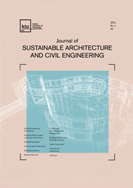Factors Affecting the Shortage and or Provision of Sustainable Affordable Housing in Developing Countries – A Case-Study of Cross River State, Nigeria
Factors Affecting the Shortage and or Provision of Sustainable Affordable Housing in Developing Countries – A Case-Study of Cross River State, Nigeria
Author(s): Aniebietabasi Ackley, Catherine Teeling, Eugene Ehimatie AtamewanSubject(s): Evaluation research, Rural and urban sociology, Welfare services, Environmental interactions
Published by: Exeley Inc.
Keywords: Sustainable; affordable housing; Cross River State; Nigeria;
Summary/Abstract: The problem of shelter in developing countries is the shortage of affordable housing especially for the urban poor. This housing shortage exposes the citizens to live in inadequate housing conditions. This study presents evidence of the factors affecting the shortage and or provision of sustainable affordable housing in Cross River State, Nigeria. Primary data was collected from semi-structured interviews and unobtrusive observations. This data was then analysed using descriptive statistics (frequency counts and simple percentages). The study findings revealed that, many interviewees suggested that rural-urban migration 98% (n=48), and lack of planning, maintenance and management 90% (n=45) as the main factors leading to the shortage of affordable housing. The interviewees suggested that poor implementation of government housing policies 84% (n=42), difficulty in purchasing land 94% (n=47), the high cost of building materials 96% (n=48), and lack of finance and access to credit facilities 80% (n=40) were significant challenges hindering the provision of sustainable affordable housing. The study concludes that affordable housing shortage and or provision can be minimised and enhanced by encouraging building developments that are; flexible and smart with minimal usage of non-renewable energy, use of durable and locally available building materials that respond appropriately to environmental factors and forces, availability of housing for the target population and a switch to a more sustainable way of planning, design, construction and maintenance of buildings.
Journal: Journal of Sustainable Architecture and Civil Engineering
- Issue Year: 22/2018
- Issue No: 1
- Page Range: 27-38
- Page Count: 12
- Language: English

